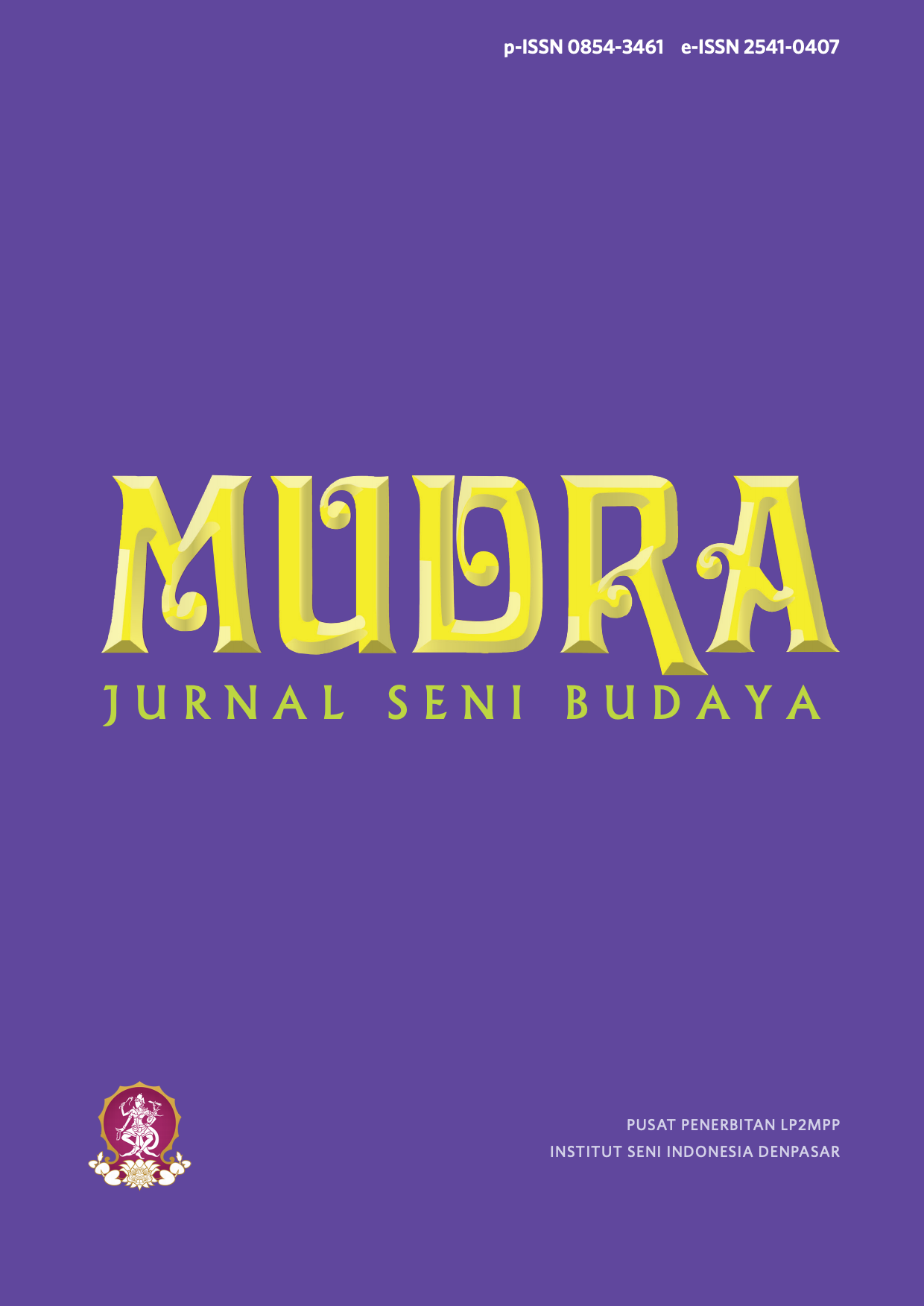Tata Busana Adat Bali Aga Desa Tenganan Pagringsingan Dan Desa Asak Karangasem
DOI:
https://doi.org/10.31091/mudra.v21i2.1522Keywords:
Busana adat, Tenganan Pegringsingan,, AsakAbstract
This is a report of research findings regarding the lore of traditional clothing/costume in Bali Aga village in terms of its form, function, and meaning, along with its transformation in dance creativity. This is recently developed in the villages of Tenganan Pegringsingan and Asak Karangasem, where the art is inherited from one generation to another generation. The developed form of clothing in the traditional village of Bali Aga is distinctively unique, i.e. the featuring form is stimulated by the mutual support between the function and the meaning. In addition to featuring the aesthetic form, the clothing lore also reflects the meaning. This is possible due to the fact that the selected form does not only cater to the aesthetic deliberation, but he content reflects worthy and interesting symbolic values.
Downloads
References
Gie, The Liang. 1996. Filsafat Keindahan. Yogyakarta: Pusat Belajar Ilmu Berguna.
Ibroni, T.O. 1999. Pokok-pokok Antropologi Budaya. Jakarta:Yayasan Obor Indonesia.
Malinowski, Branislaw. 1983. Dinamika Bagi Perubahan Budaya: Satu Penyiasatan Mengenai Perhubungan Ras di Afrika. Dewan bahasa dan Pustaka Kementerian Pelajaran Pelajaran Malaysia: Malaysia.
Purwadarminta, W.J.S. 1976. Kamus Besar Bahasa Indonesia. Jakarta: Departemen Pendidikan dan Kebudayaan.
Sobur, Alex. 2003. Semiotika Komunikasi. Bandug: PT. Remaja Rosdakarya.
Sutrisno, Mudji Sj.Fx. dan Verhaad Sj. Christ. 1993. Estetika Filsafat Keindahan. Yogyakarta: Kanisius.
Storey, John. 2003. Teori Budaya dan Budaya Pop. Yogyakarta: Memetakan Lanskap Konseptual Cultural Studies.
Downloads
Published
How to Cite
Issue
Section
License
Copyright (c) 2007 Author(s)

This work is licensed under a Creative Commons Attribution-NonCommercial-ShareAlike 4.0 International License.
- Copyright on any open access article in a journal published by Mudra Jurnal Seni Budaya is retained by the author(s).
-
The Creative Commons Attribution License 4.0 formalizes these and other terms and conditions of publishing articles.









